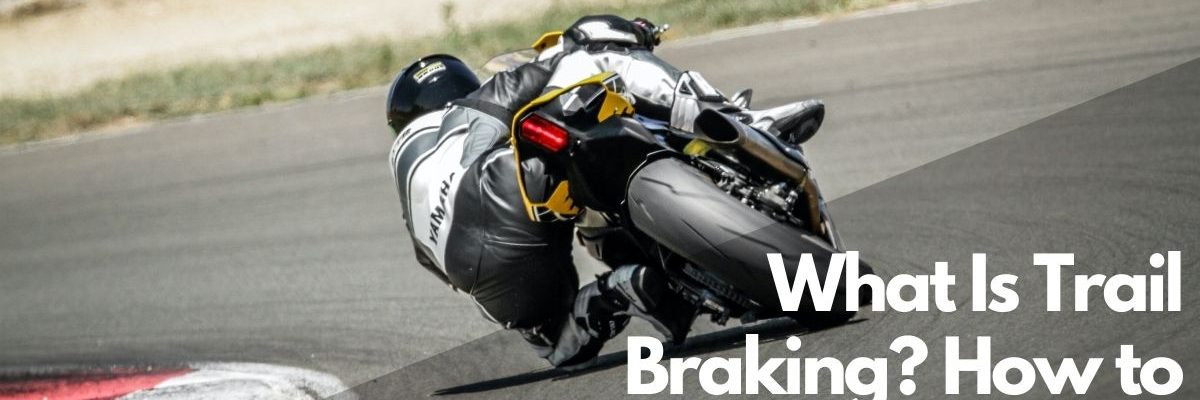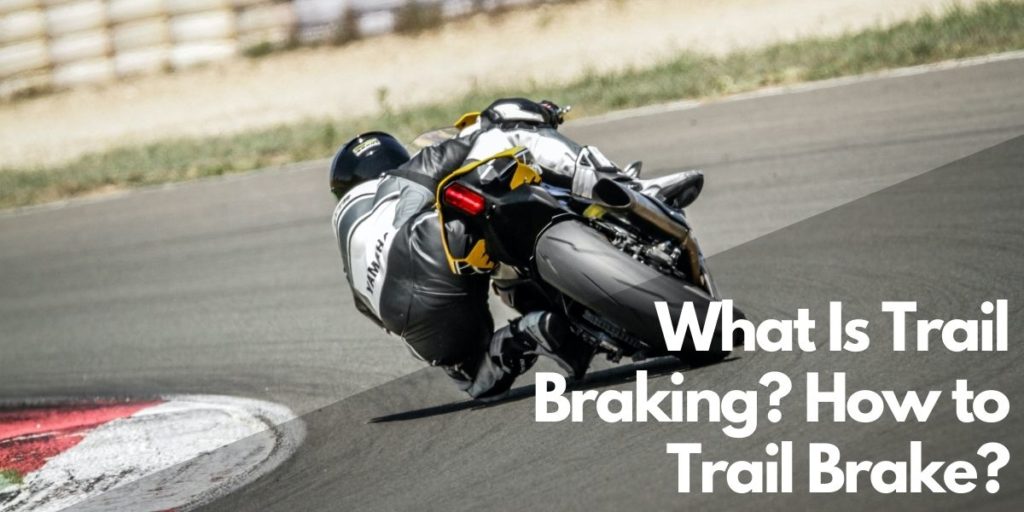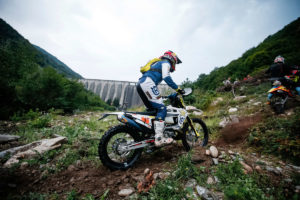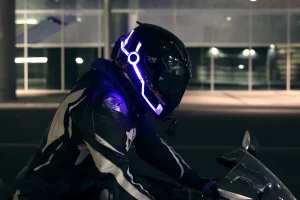Many riders are concerned about starting their career once in their life, and you have no idea how much we can tell you about it. Trail braking is a motorcycle riding and driving technique where brakes are used beyond the entrance and gradually released. Trail brake depends on turn-in and trailed-off phenomena.
In this article, we will be going to you about trail braking, and we will cover the following points given below.
- What is trail braking?
- How and when the trail is brakes.
Furthermore, we can discuss some of the most important points of trail braking. In which we can include why the trail is braking even faster, when and how the trail is braked, and also we are going to teach with the help of this article that you can use some methods and techniques of trail braking to solve the balance issues while riding on a motorcycle or driving on a car and let suppose on any vehicle.
Contents
What Is Trail Braking?
Trail braking is a period used to explain lightning but persisted braking even as becoming a corner. It is a period typically used across the paddock. However, I do not often see it being done nicely or utilized on track. So, I’ll begin with some basics. The brake is a combination of braking and turning on equal time to the path or a trail. It allows a driving force to break barely later, however greater importantly, manage the care of mass to useful resource corner entry. This method isn’t always the ‘racing school’ technique of braking directly, freeing the brakes that become the corner. Nor is it always breaking all manners to an apex – even though it could be possible.
Here is the certain basic concept of trail braking that is discussing in detail given below.
- The basic concept of trail braking.
- Getting and maintaining the grip.
- Find out balance issues.
- Basic understanding of what trail braking is.
- Tips and some tricks about trail braking.
These points are very common and general to understand the basic learning of what trail braking is.
The Basic Concept or Idea
The basic concept and idea are very simple; it is a game between BP and lean. After a lot of study of trial braking, my perspective is that the transition from trail braking is a complete lean angle into an apex of nook or corner; when the lean angle is increased, the brake is letting off.
For example, when the vehicle turn-in in track, its BP is 100%, and lean should be zero when the BP is 75%, then the lean must be 25%, and when the vehicle trailed off, then its BP should be Zero lean angle must be 100%.
Getting and Maintain a Grip
Trail braking is mostly about optimizing grip. Tires most effective have a lot of traction, and while a motorcycle is difficult hard braking, it uses plenty of the available traction. Unfortunately, leaning a motorcycle over significantly reduced the tire’s touch patch, and therefore additionally highly negates traction. So if you try to lean the motorcycle over at the same time as difficult braking, you’re nearly assured to low-side, as there is not enough available grip to move around.
How to Check & Find a Balance
Trail braking permits the rider to discover a sweet spot in traction between the braking and cornering. As you start to enter with a corner, you need to start slowly and reduce the stress at a front brake or trail the brakes. When this situation happens, the tires should be afforded some extra traction when you used up through leaning. You’re buying and selling one traction-hogging motion for some other at a consistent or even rate.
Basic Understanding
As mentioned in the above points, now you have a clear understanding of the trail brakes, and also you get through the basic concept and how to maintain a grip, check and find a balance between lean and corner.
Through this article, we can tell you the basic understanding steps you learn while riding and driving on a vehicle.
- Always check and balance between the lean angle and apex corner.
- BP should be 100% when you turn in, and the lean angle is zero at first.
- At the time of the trial of the process will change into vice versa.
- You have to make sure about the speed, grip, and balance.
- Otherwise, it may cause serious injuries.
Tips & Tricks
As we stated earlier, using the front brake of the mid-corner will make the motorcycle need to be stand up. Because you are using such constrained braking stress by the point you have to begin out to lean the motorcycle over genuinely, this impact should not have an excessive amount of effect at the route of a front-wheel direction, and maybe counteracted through making use of a piece of extra stress on the internal handlebar to preserve the aspect tipped over and for going within the side of the intended direction. Depending on the corner, you will need to allow off the brakes or get at the fuel line at slightly distinct times. Once you are snug with a trail braking, you could start to test how to tackle a particular corner fine.
How to Trail Brake
A trail braking is like a hard approach to get constantly right. It calls for various experiences to ensure you are getting the maximum out of all 4 tires at corner access. However, while you get it right, you will be fast.
Here is a way to trail brake with the following given points that may be helpful while riding or driving:
- Brake in an instant line at a maximum force.
- Slightly earlier than the turn-in factor, start to ease off or trailed off the brakes.
- Begin to show into the nook or corner.
- When the steerage angle is increased, less the braking pressure.
- Use the suitable quantity of braking to maintain a well-balanced vehicle via the corner access phase.
Suppose that you are a trail brake; you will be capable of brake and a minor meters later than normal; however, as usual, make sure that the bulk of your deceleration is accomplished in a direct or a straight line. As I tell you about how to maintain the grip section or point, you could only complete the most braking simultaneously as you aren’t turning. As you’re drawing near, the turn-in factor starts to trail off the brakes. It is must be a part of the technique is smooth.
To start, come off the brakes too speedy, and you will unbalance the vehicle. Then, at the factor of turn-in, begin to show your vehicle towards the apex. It’s essential right here to have correct imaginative and prescient and also you need to be already searching on the apex. It is the factor in trail braking starts, as you are trailing the brakes beyond the turning areas. As you increased the steerage angle, to carry the vehicle into an apex, you will need to release brake stress constantly.
The extra steering input, the much less braking pressure you will be capable of maintaining until you attain the last 10-15% of brake stress, in which you will handiest be the use of the brakes to manipulate the pitch of the vehicle. It is a very complicated part, in which the vehicle may also rotate, and sensitive contact is required. An instance statistics hint braking and steerage from a driving force whose trail braking as you may see the motive force brakes (as much as the grip is the threshold) in a direct line and with none steerage, to slow down as quickly as possible.
Then, as soon as released brake stress somewhat, they start to show into a corner. As the vehicle enters into a corner, the quantity of path braking required relies upon the vehicle’s stability. Ideally, we need to use all the available grip from the 4 tires, which we manipulate with the aid of using braking barely extra or much less and changing the vehicle pitch. However, more braking equals greater front or much less rear grip, and much less braking equals much less front or extra rear grip. Before an apex, the motive force needs to be absolutely off the whole brakes and may entirely use the tires grip for cornering; without a grip, it is rarely used for deceleration.
After knowing what trail braking is and how to trail brake, the next question arrives in our minds about when the trail is the brake. It is very important to know so we will teach you about when is to the trail braking.
When To Trail Brake
It has to be said that it is now no longer essential to trail brake into all the corners. Trail braking is high-quality acceptable to slower corners. We need to ‘rotate’ the automobile or vehicle before an apex to show the automobile more or open up to the exit, permitting us to get that earlier on the throttle. In quicker corners, we are not trailing brake as tons, and we will probably come off brakes earlier (even though probably nevertheless trail the little) so that we do not switch an excessive amount of grip to the front tires and might maintain rear settled, that is what you need in the short stuff.
The quantity of path braking wanted for a particular corner is not set in stone. You will want to be dynamic in your technique because the distinction in corners, setup, tune temperature, or so on will affect the stability of your automobile and the quantity of path braking required. For that reason, trail braking is all about feeling or reacting to how much the automobile or vehicle actions beneath you as soon as you have become in.
Difference Between a Professional Rider & Amateur Rider
The expert riding force is the use of 100% of a grip to be had all through the corner. However, the amateur is not pretty there. Here is what’s happening for each driver:
A Professional Rider
- A vehicle was arriving at the nook at close to regular speed.
- Brakes as overdue as possible, the use of 100% of a grip to be had.
- The driving force is on the edge of locking a tire.
- As a professional driver becomes the corner, they balance all the braking pressure reduction and increase the steerage perfectly, using all the grip to be had.
- Deceleration is whole, and now the automobile or any vehicle uses 100% of to be had grip into the turn.
Amateur Rider
- A vehicle is arriving at the nook at close to regular speed.
- Not pretty much quite the use of all the grip to be had to brake and, consequently, brake too early.
- The driving force can be involved approximately locking a tire.
- The amateur driving force releases the brakes to extra while in an instant line, showing into a corner.
- As you may see, there may be extra grip to be had to each slow down and turn.
- Deceleration is nearly complete, and the automobile is popping with its top g-pressure; however, the motive force is not the use of all of the grip to be had and will bring a touch at corner speed.
Balance Issues
Trail braking is that you can assist remedy this relatively as we will manage the burden of the auto vehicle, and consequently grip if we will alternate our riding method slightly. Imagine you’ve got a vehicle with an excessive amount of understeer, in which as quickly as you switch the auto vehicle into a corner, the front pushes huge and probably won’t make an apex. With this whole scenario, there maybe is ‘front limited’ stability because the front does not have sufficient grip. When this happens, a great motive force will apprehend that we want to present the front of the extra auto grip on the entry.
This method is the front of the auto vehicle diving extra and has extra weight and, consequently, grip, supporting the stability issue.






